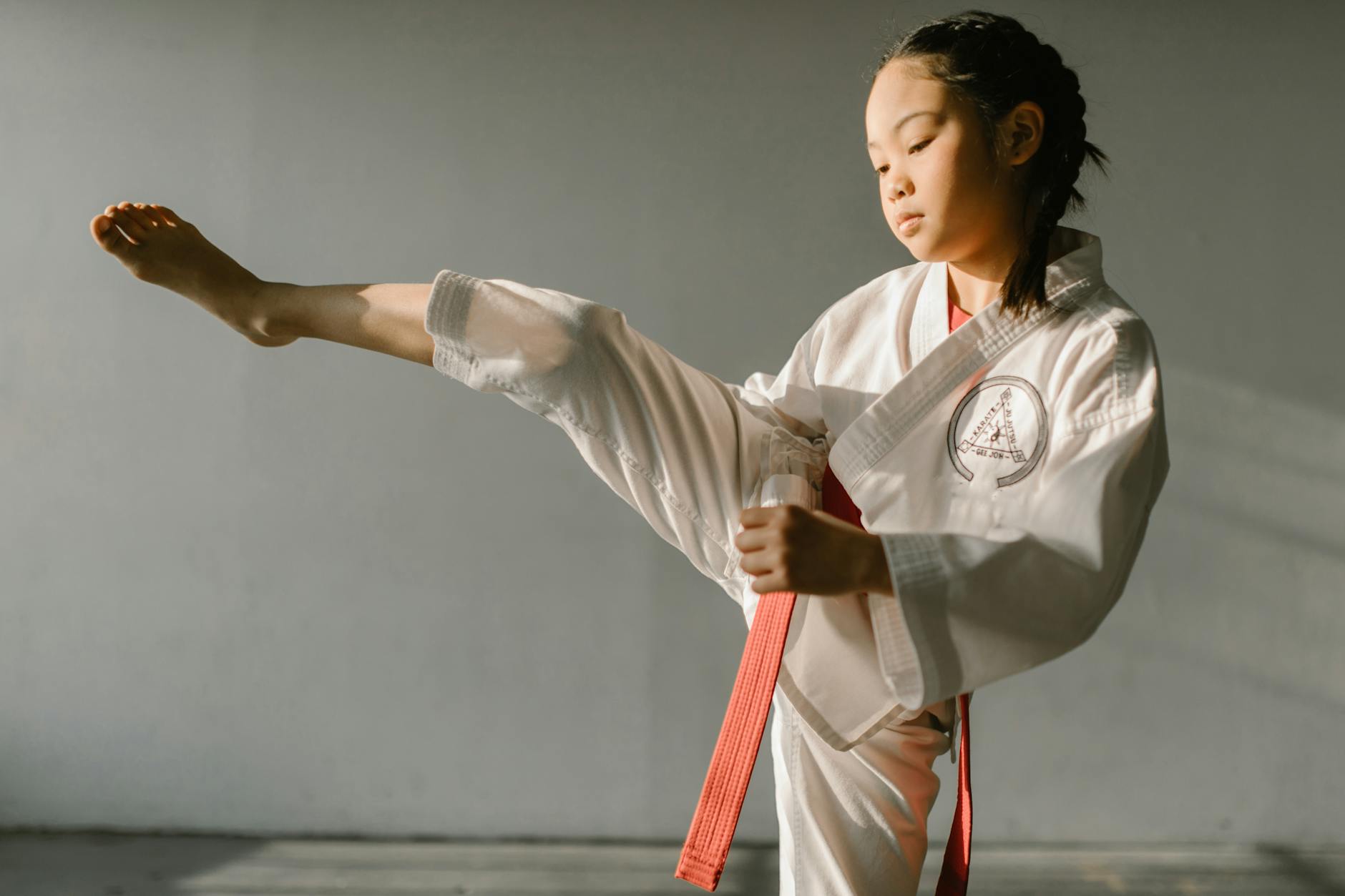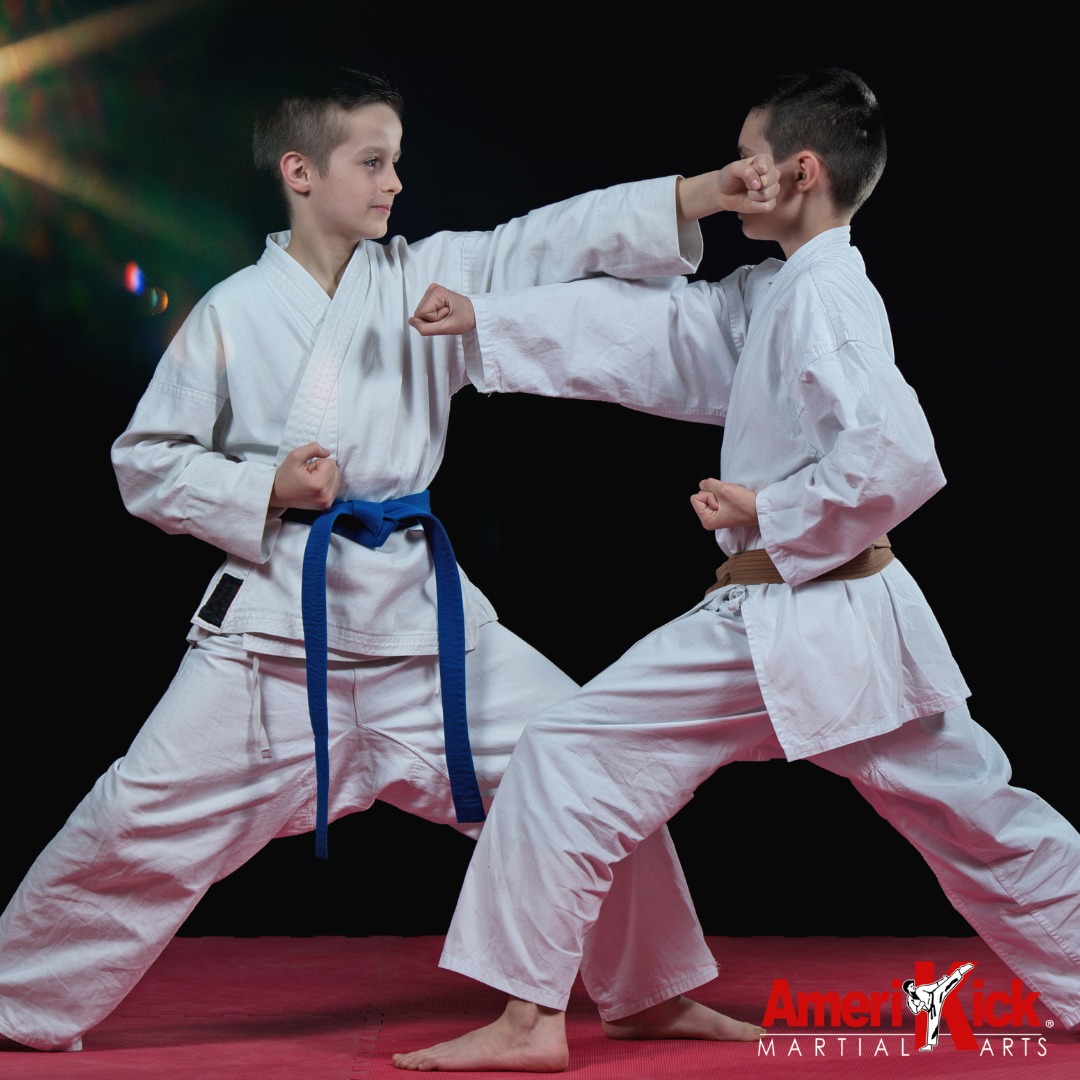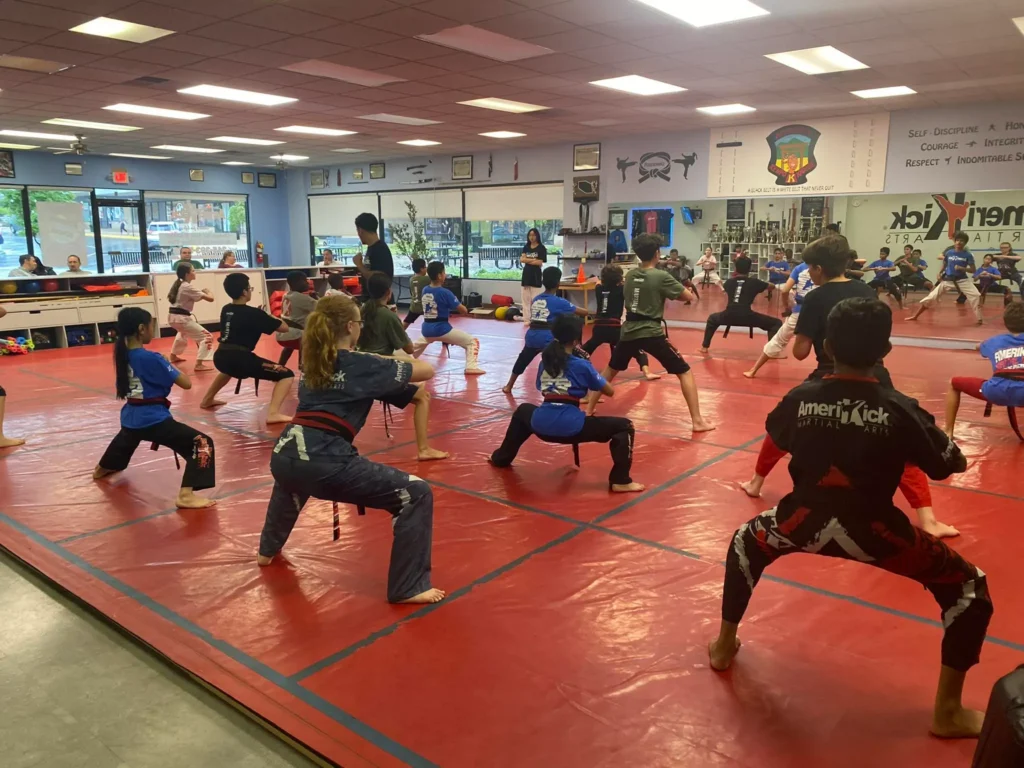

Kids today face endless distractions, from screens to busy schedules, making focus harder than ever to achieve. Martial arts helps kids build focus by offering a unique solution that blends physical discipline with mental focus. Through structured routines, goal-setting, and mindfulness, martial arts strengthens a child’s ability to concentrate — not just on the mat, but in everyday life. It’s more than just kicks and punches; it’s about building skills that last a lifetime.
Discipline is the foundation of martial arts. For kids, it’s more than just rules—they learn structure, patience, and the importance of hard work. This creates lasting habits that extend well beyond the dojo. Here’s how martial arts instills discipline and helps children focus.
Martial arts thrive in a structured environment with clear routines, rules, and expectations. Each session is organized with warm-ups, techniques, and cooldowns, adhering to a consistent flow that children can rely on. Kids know what’s expected, which eliminates guesswork and helps them stay on task.
These rules aren’t just about behavior; they teach respect for instructors, peers, and themselves. With this structure, kids develop a sense of order that carries over into schoolwork and everyday life. Think of it like building a solid framework—a mental roadmap for navigating challenges with confidence.
Martial arts isn’t about instant mastery; it’s about progress through repetition. Kids learn techniques like punches, kicks, and stances by practicing them over and over. Although repetitive, this builds more than muscle memory—it teaches focus and patience to refine even the tiniest details, like foot placement or timing.
Each drill strengthens a child’s ability to concentrate, requiring them to be present in the moment. Have you ever noticed how athletes practice the same moves repeatedly? The principle is the same here: repetition sharpens skills while fostering mental discipline.
One of the most engaging aspects of martial arts is the belt system. Each belt represents a milestone, giving kids something tangible to work toward. These goals are incremental, breaking larger achievements into manageable steps. Whether it’s mastering a new kick or memorizing a sequence, kids learn to focus on the now while keeping their long-term objectives clear.
This approach mirrors effective goal-setting strategies in real life. By tackling smaller tasks to achieve bigger dreams, kids develop perseverance and focus along the way. Watching them light up as they earn a new belt shows how powerful striving for personal success can be.
Physical activity has a profound impact on mental clarity and concentration, especially for children. Martial arts play a unique role by combining rigorous physical training with mindfulness practices, creating a perfect balance of body and mind. Through structured exercises and mental discipline, martial arts helps kids build focus and sharpen focus in ways that traditional exercises often overlook.
When kids engage in martial arts, their bodies release endorphins—commonly known as “feel-good” hormones. These natural chemicals elevate mood, reduce stress, and create a sense of well-being. Why is this important for focus? A happier, calmer child is better equipped to concentrate on the task at hand, whether it’s a math problem in school or a challenging sequence during martial arts class.
In addition, martial arts involve activities like kicking, punching, and jumping that get the heart pumping. This aerobic activity increases blood flow to the brain, which helps improve cognitive function and attention. It’s like fueling the brain with fresh energy, making it easier to stay alert and engaged. Don’t we all work better when we feel good?
Martial arts demand precision and control, fostering a deep connection between the mind and body. Kids need to pay close attention to their movements, whether it’s perfecting a roundhouse kick, maintaining balance in a stance, or reacting quickly to a partner’s attack. Over time, this practice develops heightened body awareness and coordination.
What does this have to do with focus? Understanding how their bodies move helps kids stay present. They learn to focus on small details, like the pivot of a foot or the angle of an arm, rather than getting distracted. This translates into daily life, where they can channel the same level of attention to tasks like writing, drawing, or even tying their shoes.
Martial arts teach kids that focus isn’t just about their mind—it’s about a strong connection between mind and body. Because of this connection, martial arts helps kids build focus. This coordination helps them engage fully in the present moment, an invaluable skill when distractions are constantly pulling for attention
Mindfulness and breathing are at the heart of martial arts training, helping kids master the art of mental clarity and emotional control. This isn’t just about sitting cross-legged and closing eyes; it’s incorporating powerful tools to help children balance their energy and stay grounded even in challenging situations. In martial arts, mindfulness becomes a superpower that helps children focus on their training and manage stress effectively.
In martial arts, meditation is more than a relaxing end-of-class activity—it’s a core skill for focus. By practicing meditative techniques, kids learn to quiet their racing thoughts and direct their full attention to the present moment. This helps them absorb instructions better and apply techniques with precision.
During meditation, children often focus on simple things like their breath or posture. This practice teaches them to clear mental distractions and builds their attention span over time. Imagine a computer closing down unnecessary tabs to run faster. That’s exactly what these moments of mindfulness do for your child’s brain—they declutter and sharpen focus.
Instructors in martial arts often weave meditation into warm-ups or cooldowns. With regular practice, kids may find themselves taking these mindful moments off the mat—helping them concentrate in school or stay calm during stressful moments at home.

Breathing techniques in martial arts teach kids an important lesson: how they breathe can influence how they feel. For instance, shallow, quick breaths often accompany stress or anxiety, while slow, deliberate breaths promote calmness and control. Many martial arts classes include exercises that encourage children to breathe from their diaphragms, helping them naturally manage their emotional state.
how does martial arts helps kids build focus? Controlled breathing builds an internal pause button. Let’s say a child is feeling frustrated during training or struggling with a tough day—they can use what they’ve learned to take a few deep breaths, reset their emotions, and carry on. It’s a skill that acts like an emotional reset switch, helping kids stay engaged even when challenges arise.
In many schools of martial arts, specific breathing drills are tied to movements. For example, exhaling during a punch or kick helps kids focus on timing and form. Over time, this coordination between breath and movement reinforces self-awareness, making kids more in tune with their body and thoughts—a skill that extends far beyond the dojo.
Martial arts don’t just engage the body—they also empower the mind, shaping social skills and emotional resilience in kids. Through carefully structured classes, children learn how to forge strong connections with peers while building confidence from within. Here’s how martial arts encourage these important social and emotional growth areas.
Amerikick North Penn Martial arts provide a perfect platform for kids to interact and engage with others in a supportive setting. Partner drills, for instance, teach cooperation and mutual respect. When a child pairs up with a partner to practice moves or spar safely, they’re learning to work as a team. Collaboration becomes second nature because success often hinges on working together to improve technique and timing.
Sparring, a controlled practice of combat, builds even deeper interpersonal skills. Both participants must trust each other to follow rules and keep safety a priority. This mutual reliance fosters respect and teaches kids the value of shared goals. Think of it as a small-scale team project: each child learns that focusing on the task isn’t just about their own improvement, but about helping their partner succeed too.
On top of that, kids quickly discover the joy of belonging to a community. Martial arts classes bring children of various ages and backgrounds together, creating an environment where friendships are built naturally. Since respect and listening are core components of martial arts, these bonds are often rooted in understanding and cooperation. It’s a setting where bullying has no place, and teamwork thrives.
Few things fuel focus like confidence, and martial arts are a proven confidence booster. Achieving goals—whether it involves earning a new belt or mastering a challenging move—instills a strong sense of accomplishment. This feeling of “I can do it” carries over into other parts of a child’s life, whether it’s tackling a tough math assignment or trying out for a sports team.
Martial arts sets kids up with clear, measurable milestones. Each success, no matter how small, builds on the last. For example, a child who once struggled with a basic stance might feel unstoppable after nailing a more complex sequence. This sense of progress shows them that effort and focus lead to results—an incredible life lesson.
Kids who feel confident also tend to have better emotional regulation. Martial arts help them learn that failure isn’t a setback but an opportunity to improve. For a child who slips up during practice, a compassionate instructor might say, “That was great effort—let’s refine it!” This approach not only builds resilience but also keeps kids motivated to stay focused and keep working toward their goals.
Confidence isn’t just visible in their performance on the mat; it shows up in the way they carry themselves outside class. Whether they’re raising their hand in school or meeting new friends, kids who feel empowered can tune out distractions and center their attention on what truly matters. With every stripe and belt achieved, martial arts reminds kids that they’re capable of incredible things.
Yes, martial arts can be very beneficial for kids with ADHD. The structured and supportive environment of martial arts classes, combined with goal-oriented training, directly addresses common ADHD challenges like impulsiveness, hyperactivity, and difficulty maintaining attention. In essence, martial arts helps kids build focus, a skill that is particularly valuable for children with ADHD